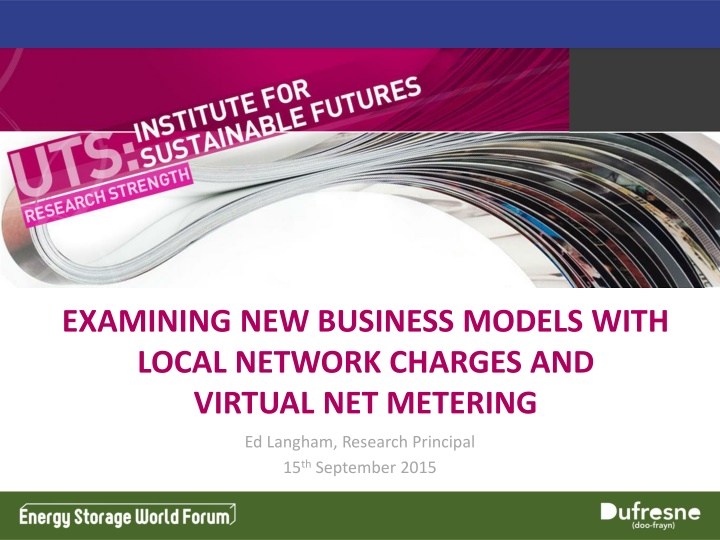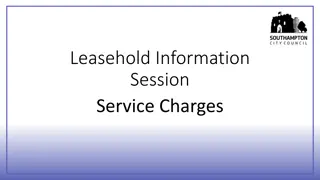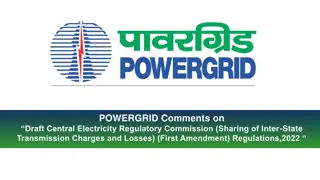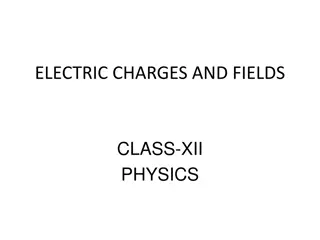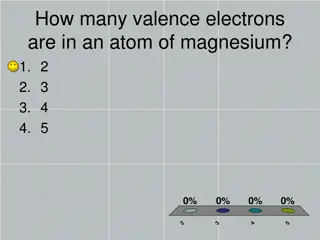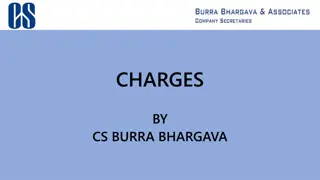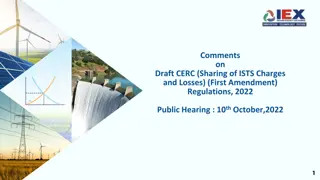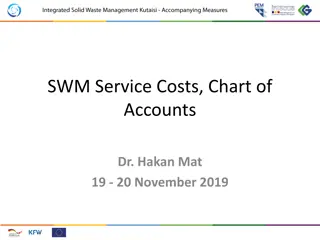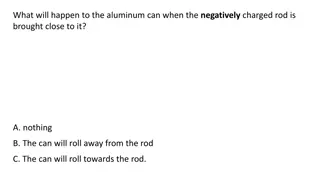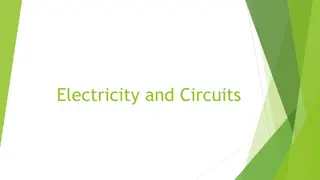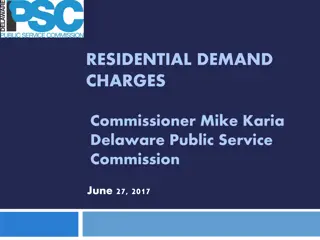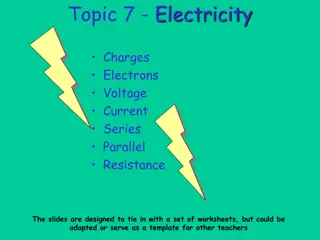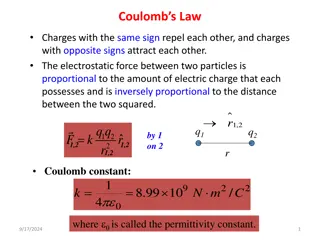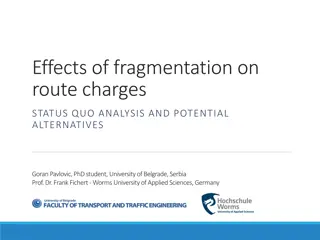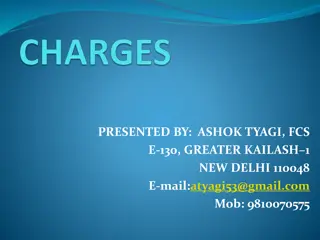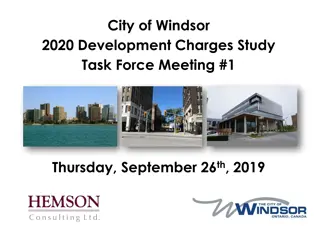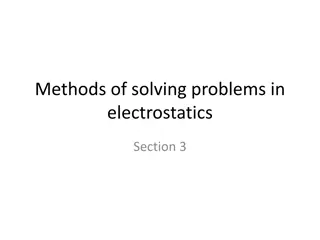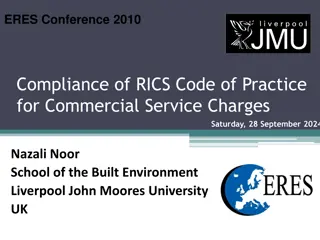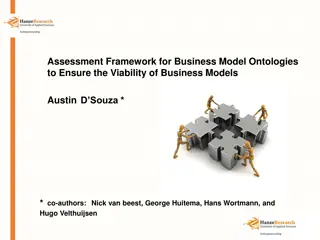Examining New Business Models with Local Network Charges
This presentation by Ed Langham delves into the dynamics of local energy markets, focusing on the valuation of local energy through local network charges and virtual net metering. It explores opportunities and barriers in response to the changing landscape of distributed generation and storage, offering insights on how network businesses can adapt. The content discusses the transformation of energy markets, the current and future network models, and the implications for the allocation of costs across different network levels.
Download Presentation

Please find below an Image/Link to download the presentation.
The content on the website is provided AS IS for your information and personal use only. It may not be sold, licensed, or shared on other websites without obtaining consent from the author.If you encounter any issues during the download, it is possible that the publisher has removed the file from their server.
You are allowed to download the files provided on this website for personal or commercial use, subject to the condition that they are used lawfully. All files are the property of their respective owners.
The content on the website is provided AS IS for your information and personal use only. It may not be sold, licensed, or shared on other websites without obtaining consent from the author.
E N D
Presentation Transcript
EXAMINING NEW BUSINESS MODELS WITH LOCAL NETWORK CHARGES AND VIRTUAL NET METERING Ed Langham, Research Principal 15th September 2015
OVERVIEW 1. CONTEXT: A TRANSFORMING MARKET 2. LOCAL ENERGY: WHAT IS IT AND WHY ACT? 3. VALUING LOCAL ENERGY: Local Network Charges Virtual Net Metering (VNM) 4. OPPORTUNITIES & BARRIERS 5. THE PROJECT
CONTEXT: A TRANSFORMING MARKET Model of one way flows changing Renewable energy & energy efficiency support policies Falling cost of distributed energy Rising electricity prices Have we seen peak grid energy ?
Source: 2014 National Electricity Forecasting Report (NEFR) (June 2014)
How could network businesses respond to distributed generation & storage? (possible options) 1. Defensive: a. Technical/Administrative barriers (no more DG connections) b. Defensive pricing (e.g. raise fixed access charges) Happening? 2. Proactive: Option Cross-subsidy addressed time-of-use Cost reflective pricing spatial/temporal constraints Demand management incentives Local network charges Partial (local) use of system (level of connection)
NETWORK LEVELS AND TERMINOLOGY Local Energy Local energy: embedded, distributed, or decentralised generation and storage, which means located within the distribution network
Today: Highly centralised network
The future: decentralised network
With far more LOCAL ENERGY Local Energy
WHAT HAPPENS NOW Local Energy Current network charges for local energy
ALLOCATION OF COSTS BY NETWORK LEVELS Non-System 4% System-fixed Transmission 6% 19% LV Distribution Sub- transmission line 20% 8% 43% HV Distribution
ALLOCATION OF COSTS BY NETWORK LEVELS 8% 43% 19% 20% 4% 6% System-fixed Non-System
COMMON RESULTING PROBLEMS 1. Perverse incentive to duplicate infrastructure (build embedded networks) Already happening (e.g. Willoughby Council) 2. Distributed generators receive only wholesale price for exports Constrains potential cost effective DG 3. Strong incentive for customers/product developers to reduce behind the meter consumption Reduced network revenue > Defensive pricing strategies
HOW CAN WE VALUE LOCAL ENERGY? 1. Local Network Charges Lower network tariffs for energy generated and consumed locally (i.e. for partial use of the grid) 2. Virtual Net Metering (VNM) The ability to offset energy consumption at one site with metered generation at a second site on a time-of-use basis. Links well with Local Network Charges.
OPPORTUNITIES Unlock new local energy projects Reduce load defection for network businesses Unlock new product offerings e.g. neighbourhood storage Retailers offering VNM may get competitive advantage With customer segments (e.g. local govt, large corporates, community energy) New product offerings
BARRIERS 1. Theoretically no regulatory reason why network businesses could not apply local network charges now. 2. BUT no methodology or guidance exists on how to do this. 3. Likely to require Rule Change to require DNSPs to calculate and offer Local Network Charges if to become widely utilised/available. 4. Retailers can offer VNM now, and currently expect it unlikely that a rule change will be required to enable this.
THE PROJECT Entitled Facilitating local network charges and VNM Led by ISF Funded by ARENA and other co-contributors Runs for 14 months from July 2015
ORGANISATIONS INVOLVED Local Energy Proponents Moira Shire Council Swan Hill Council Byron Shire Council Willoughby Council Wannon Water City of Sydney Retailers AGL Energy Australia Associations/ other Total Environment Centre NSW Govt RE Advocate Electricity Retailers Association Network Businesses Ergon Energy Powercor Ausgrid / Essential Energy Electricity Networks Association Clean Energy Council Property Council of NSW Alternative Technology Association
PROJECT OBJECTIVE & KEY DELIVERABLES Objective: tofacilitate local network charges & virtual net metering Five case studies, or virtual trials , of LNC and VNM A recommended methodology for calculating LNCs An assessment of the technical requirements and indicative costs for the introduction of Virtual Net Metering Economic modelling of the benefits & impacts of LNCs and VNM Increased industry understanding of LNCs and Virtual Net Metering Specific consultation and support for rule change proposal(s)
FRINGE OF GRID Tech Bioenergy (TBC) THE TRIALS Network Ergon Retailer Ergon Model TBC BYRON Tech PV Network Essential MOIRA/SWAN HILL Retailer Energy Australia Tech PV Council 1 1 Model Network Powercor Retailer AGL 1 Many OR Many 1 Model WILLOUGHBY Tech Cogen WANNON WATER Network Ausgrid Tech Wind Retailer Energy Australia Network Powercor Council 1 1 Model Retailer AGL 1 1 OR 1 2 Model
THANK YOU Contact me to keep up with project developments and participate in consultation Ed Langham Research Principal Edward.Langham@uts.edu.au (02) 9514 4971
Paid for all distributed generation HOW TO VALUE LOCAL ENERGY LOCAL NETWORK CHARGES (or credits) local generation credit local generation credit/ or virtual private wire Links the generator to a customer Virtual Net Metering (or virtual private wire) LOCAL ENERGY SALES WHAT WOULD THESE LOOK LIKE?
PHYSICAL ELECTRICITY FLOWS Uses 100 MWh Uses 150 MWh Generates 110 MWh Imports 100 MWh Imports 50 MWh Exports 10 MWh
MONETARY FLOWS Uses 150 MWh Uses 100 MWh Imports 50 MWh Imports 100 MWh Generates 110 MWh Exports 10 MWh
MONETARY FLOWS Uses 150 MWh Uses 100 MWh Imports 50 MWh Imports 100 MWh Generates 110 MWh Exports 10 MWh
